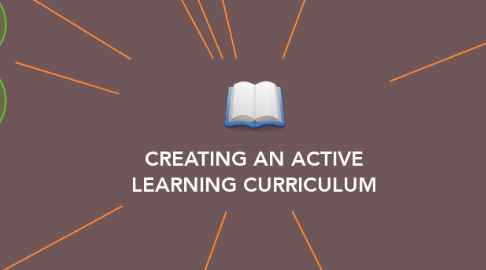CREATING AN ACTIVE LEARNING CURRICULUM
by Priyanka Dwivedi


1. Topic Type
1.1. Basic Science
1.2. Clinical Science
1.3. Visual Specialty
2. Learners
2.1. Total Number
2.2. PGY Level
3. Setting
3.1. Duration
3.2. Location/set-up
3.3. Equipment(s)
4. Methods
4.1. One-Minute Paper
4.1.1. Ideal Group Size (Any)
4.1.2. FP: Low; LE: Variable
4.2. Think-Pair Share
4.2.1. Ideal Group Size < 40
4.2.2. FP: Low; LE: Mod to high
4.3. Case-Related Questions
4.3.1. Ideal Group Size < 40
4.3.2. FP: Moderate; LE: Moderate
4.4. Concept Maps
4.4.1. Ideal Group Size-Any (Individual/Group
4.4.2. FP: Moderate; LE: Moderate
4.5. Peer Teaching
4.5.1. Ideal Group Size (6-10)
4.5.2. FP: Moderate; LE: High
4.6. Role-Play
4.6.1. Ideal Group Size (Actors:Observers)
4.6.2. FP: Moderate; LE: High
5. Active Learning Components
5.1. Purposeful Observation
5.2. Intentional Engagement
5.3. Critical Engagement
6. Additional Resources
6.1. FP and Facilitation
6.2. Resident preparation & participation
7. Potential Impact
7.1. Medium
7.2. Low
7.3. High
8. Methodology
8.1. PBL
8.1.1. Group Size (5-12)
8.1.2. FP: Moderate; LE: Very High
8.2. PBLD
8.2.1. Group Size (5-12)
8.2.2. FP: Very High; LE: Mod High
8.3. TBL
8.3.1. Group Size (5-12)
8.3.2. FP: Mod; LE: High
8.4. Simulation
8.4.1. Group Size (Learner:Teacher)
8.4.2. FP: Very High; LE: High
8.5. Workshop
8.5.1. Group Size (ideal 4-8)
8.5.2. FP: Very High; LE: Mod High
8.6. Debate
8.6.1. Group Size - Any
8.6.2. FP: Mod; LE: Mod or High
